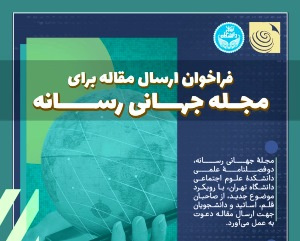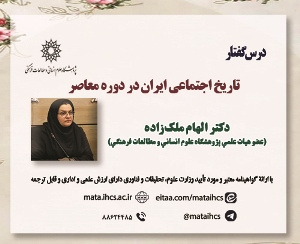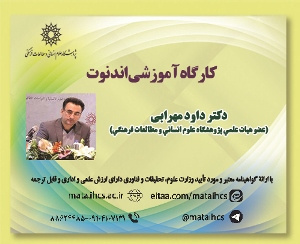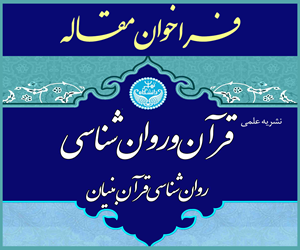تأثیر آمیخته بازاریابی سبز بر ابعاد رفتاری ارزش ویژه برند سبز محصولات ورزشی (مقاله علمی وزارت علوم)
درجه علمی: نشریه علمی (وزارت علوم)
آرشیو
چکیده
این مطالعه یک پژوهش توصیفی تحلیلی است که توسط ملاحظات و مفروضات جهان بینی پسا اثبات گرایی پشتیبانی می شود. مشارکت کنندگان این پژوهش را 394 نفر از مشتریان برند مجید تشکیل می دادند که از طریق نظرسنجی خودگزارشی آنلاین در مطالعه شرکت داشتند. برای آزمون فرضیه های این مطالعه از مدل سازی معادلات ساختاری رویکرد حداقل مربعات جزئی (PLS - SEM-3) استفاده شد. نتایج نشان داد محصولات سبز به طور مثبت بر تصویر سبز، رضایت سبز، اعتماد سبز و وفاداری سبز تأثیر می گذارد. قیمت سبز بر تصویر سبز، اعتماد سبز و وفاداری سبز تأثیر مثبت و معناداری دارد، در مقابل بر رضایت سبز تأثیر معناداری ندارد. مکان سبز تنها بر تصویر سبز تأثیر مثبت و معناداری دارد، همچنین ترویج سبز همزمان بر تصویر سبز و رضایت سبز تأثیر مثبت و معناداری دارد، در مقابل بر اعتماد سبز و وفاداری سبز تأثیر معناداری ندارد. سرانجام ارزیابی روابط درونی ابعاد ارزش ویژه برند سبز محصولات ورزشی نشان داد رابطه علی تصویر سبز با اعتماد سبز، تصویر سبز با وفاداری سبز و اعتماد سبز با وفاداری سبز مثبت و معناداری است. این نتیجه نشان می دهد مزایای محصولات ورزشی سبز کوتاه مدت است و محصولات سبز در هزینه مشتریان به طرز قابل توجهی و زمان آ نها تاحدودی صرفه جویی می کنند، با این حال به دلیل ضعف در مکان سبز و ترویج سبز مشتریان مربوطه از متعهد شدن به آن خودداری می کنند.The effect of green marketing mix on the behavioral dimensions of green brand equity of sports products
In response to increasing environmental concerns and, at the same time, increasing brand equity, companies have focused their efforts on providing environmentally friendly products and services. Sports are no exception to this rule. Because the owners of sports brands have realized that if they are responsible for the environment, they will receive a better response from their customers. At the same time, they have realized that if they take care of the environmental concerns of their customers, they are more likely to choose the products and services provided by the respective company. Therefore, these companies have actively pursued sustainable marketing strategies such as green marketing. Despite that, no study has estimated the effect of a green marketing mix on the behavioral dimensions of the special value of the green brand of sports products. This study is survey research supported by post-positivist worldview considerations and assumptions. According to the nature of the study, the current research approach is explanation and prediction, mainly done to investigate the statistical inference of path coefficients, effect sizes, and the predictive performance of the model and prediction errors. The data to test the hypotheses in this study were collected through an online self-report survey made available to Majid brand customers. Based on this, 394 questionnaires were collected. 51.9% of the examined samples were men, and 48.1% were women, ages 18 and 53. The measurement tools were selected based on the existing literature that was previously adapted to the diverse context of green marketing and the dimensions of green brand equity. Then the necessary modifications were made to adapt it to the current research field. The questionnaire consisted of two parts: the first part was dedicated to personal information and demographic characteristics, the second part was dedicated to the research variables, and finally, to test the hypotheses of this study, partial least squares structural equation modeling (PLS-SEM-3) was used. ) used. The present study showed that green products positively affect a green image, satisfaction, trust and loyalty. Green price positively and significantly affects the green image, trust, and loyalty. On the other hand, the green price has no significant effect on green satisfaction. Green place only has a positive and significant effect on the green image and does not significantly affect green satisfaction, green trust and loyalty. Green promotion simultaneously has a positive and significant effect on the green image and green satisfaction. On the other hand, green promotion has no significant effect on green trust and loyalty. Finally, by evaluating the internal relationships of the special value dimensions of the green brand of sports products, this study showed that the causal relationship of green image with green trust, green image with green loyalty, and green trust with green loyalty is a positive sign. But there is no significant causal relationship between green image and green satisfaction, green satisfaction with green trust and green satisfaction with green loyalty. In general, the findings of this study show that customers accept cost-benefit analyses about sports products. Because by estimating the strengths and weaknesses of the alternatives, they have concluded that green products have significantly saved their money and time. Also, with the cost-benefit analysis, it was found that the customers of the Majid brand do not consider the mentioned brand affordable in terms of access. As a result, they refuse to make an emotional and long-term commitment to the mentioned brand. Therefore, Majid Company, which devotes a small part of its production to green products, is suggested to design a road map for the marketing of their green products, in which they focus on maintaining the current price, diversifying the lines of green products, improving the design and Easy access is emphasized as a strategic and operational policy of the company. It is also suggested that this company strengthen the level of promotion and access to its products through the actions mentioned in the text because it was found that there is a gap between what the company offers and what the customer receives and understands. On the other hand, it is not easy to access the products of this company, and their level of trust in what the company advertises is not very high. In the end, it is necessary to mention some limitations of this research. The first limitation is that the green marketing mix is not simply summarized in the four dimensions examined in this study. Another limitation is that this study studied the behavioral dimension of customers' green brand equity, and the perceptual dimension of customer brand equity was not measured and evaluated. The third limitation is that the responses were received from Majid brand customers, who limits the generalization of the findings to other brands and customers. Finally, in this research, an online survey was used, known as easy sampling, and the selected samples may not be representative of all customers of the Majid brand. Therefore, future researchers are suggested to investigate the effect of mixed green marketing on the special value of the green brand, in addition to the dimensions presented in this research, also to examine other dimensions and conduct such a study for other sports brands.




